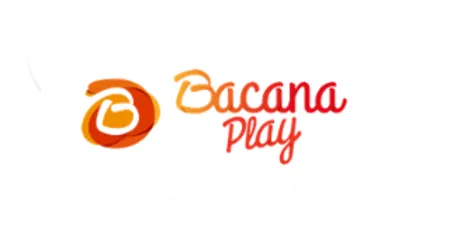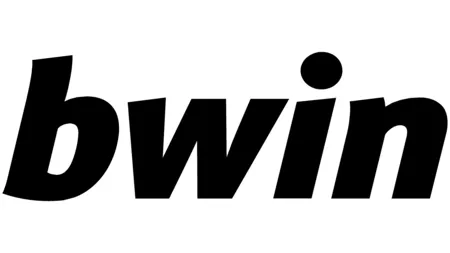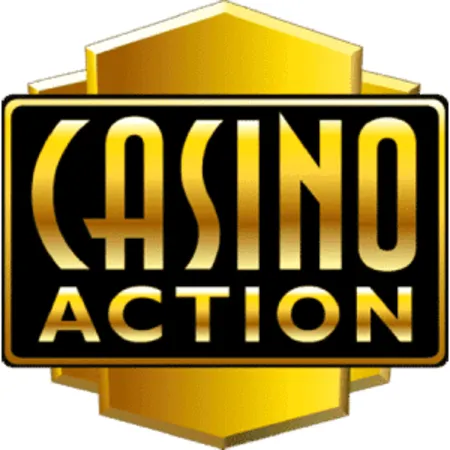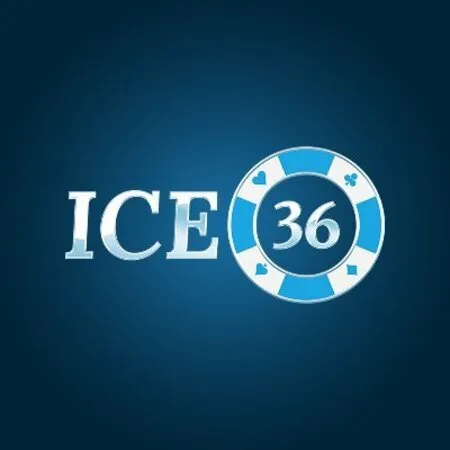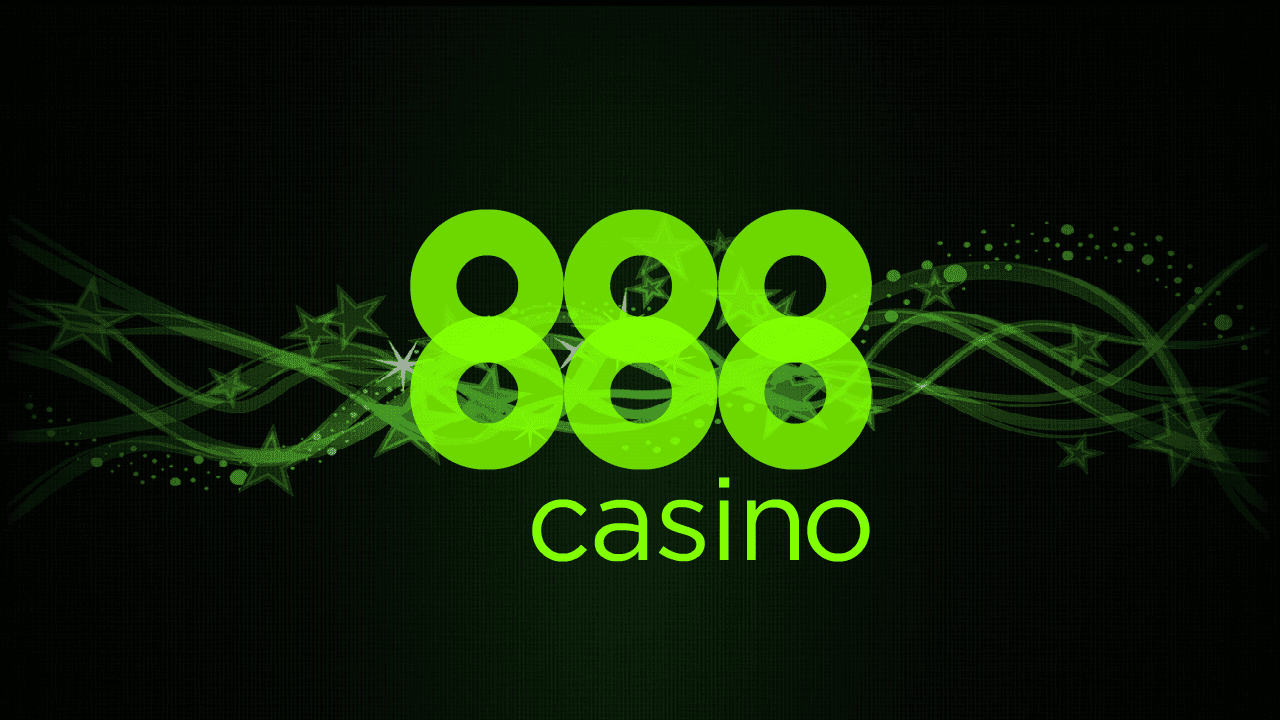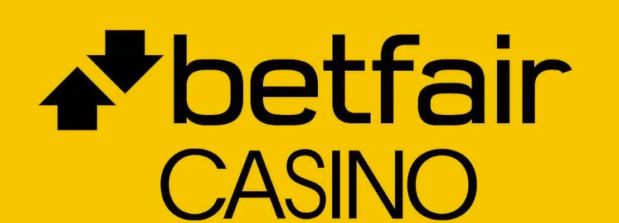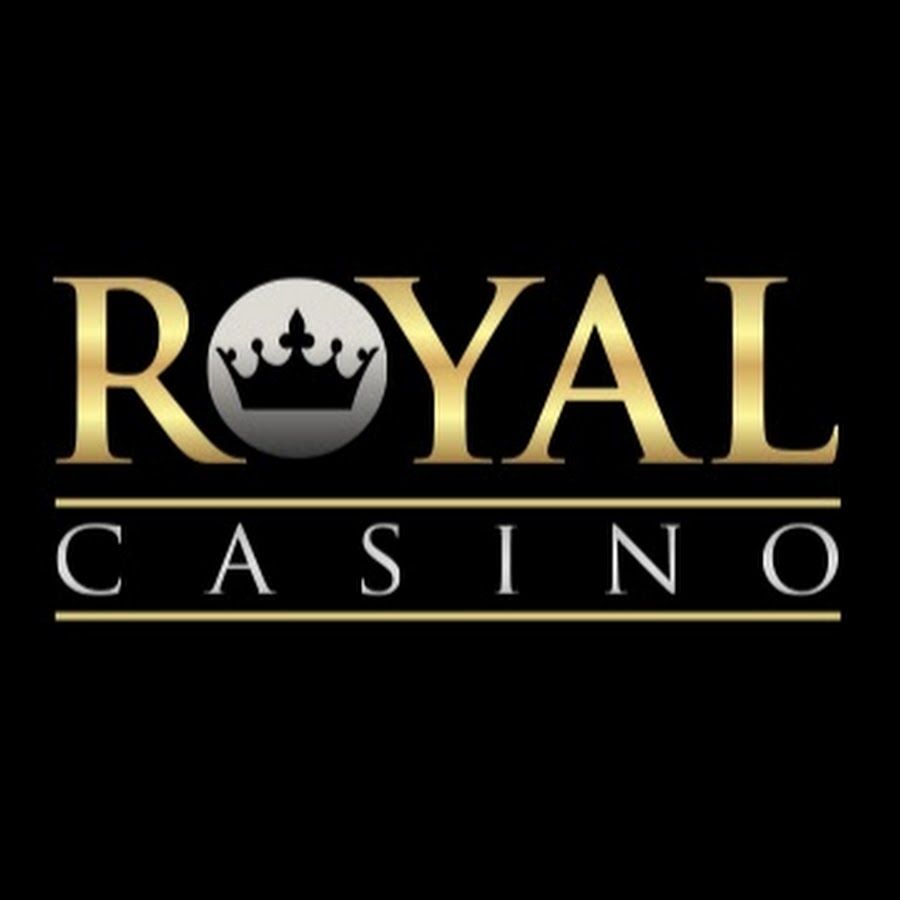Online Casino | Bedste Danske Online Casino-sider med dansk licens 2024
Online gambling er en populær og spændende form for underholdning i Danmark. Uanset om du er på udkig efter spændingen ved at spille slots, udfordringen ved bordspil, eller realismen i live casino, kan du finde det hele på online casinoer. I denne omfattende guide, vil vi hjælpe dig med at finde de bedste online casino sites med dansk licens i 2024. Vi gennemgår og sammenligner de bedste online casinoer i Danmark, baseret på forskellige kriterier, såsom bonusser, spil, software, betalingsmetoder, kunde-support, og meget mere. Vi forklarer også, hvordan man begynder at spille på online kasinoer, hvordan man kræver bonusser og hvordan man spiller ansvarligt. Desuden giver vi dig en oversigt over danske det online gamblingmarked, de juridiske og lovgivningsmæssige rammer, og fordelene ved at spille hos licenserede casinoer. Ved slutningen af denne guide, vil du have alle de oplysninger og værktøjer, du behøver for at få glæde af online gambling i Danmark, trygt og sikkert.

- Prisbelønnet app
- Unikke kampagner
- God velkomstbonus
- Unikt og sjovt tema
- BruceBet Anmeldelse
18+

- Prisbelønnet app
- Unikke kampagner
- God velkomstbonus
- Unikt og sjovt tema
- Heyspin Anmeldelse
18+
18+

- Prisbelønnet app
- Unikke kampagner
- God velkomstbonus
- Unikt og sjovt tema
- LeoVegas Anmeldelse
18+ | Kun for nye spillere bosat i Danmark | Selvudelukkelse via ROFUS.nu | Min. indbetaling er 100 kr. og max. bonus er 1.000 kr. Indbetalingen omsættes 10x indenfor 60 dage. F.eks. Indbetal 100 kr. og omsæt for 1.000 kr. og modtag 100 kr. Kun spilleautomater kan bruges til omsætning. Free spins tilgængeligt på Book of Dead. Fås ved verificering af kontoen med MitID. 50 cash free spins, 1 kr. pr spin. Ingen omsætning eller indbetalingskrav. Skal aktiveres inden 30 dage og bruges inden for 3 dage efter aktivering. Komplette vilkår. Indeholder reklamelinks | 18+ | stopspillet.dk | rofus.nu | Regler og vilkår gælder | Spil ansvarligt

- Sikker platform
- Stort spiludvalg
- Hjælpsom kundeservice
- One Casino Anmeldelse
18+ | Spil Ansvarligt | Stopspillet.dk | ROFUS.nu | Regler og vilkår gælder. Selvudelukkelse: Rofus.

- Hurtige tilbagetrækninger
- Rimelige afkastprocenter
- Sikret sikkerhed
- MrVegas Anmeldelse
18+

- Brugervenlig Mobil-App
- God Tilbud Og Bonusser
- Stort Spiludvalg
- Spillehallen Anmeldelse
Du modtager bonussen i form af poletter, der skal gennemspilles 1 gang, før du kan hæve. Du skal acceptere emails og logge ind med MitID for at modtage bonussen. Rådgivning: Stopspillet.dk. Selvudelukkelse: Rofus. 18+

- Prisbelønnet app
- Unikke kampagner
- God velkomstbonus
- Unikt og sjovt tema
- Bet365 Anmeldelse
18+

- Prisbelønnet app
- Unikke kampagner
- God velkomstbonus
- Unikt og sjovt tema
- Casinoluck Anmeldelse
18+

- Prisbelønnet app
- Unikke kampagner
- God velkomstbonus
- Unikt og sjovt tema
- Chanz Anmeldelse
18+
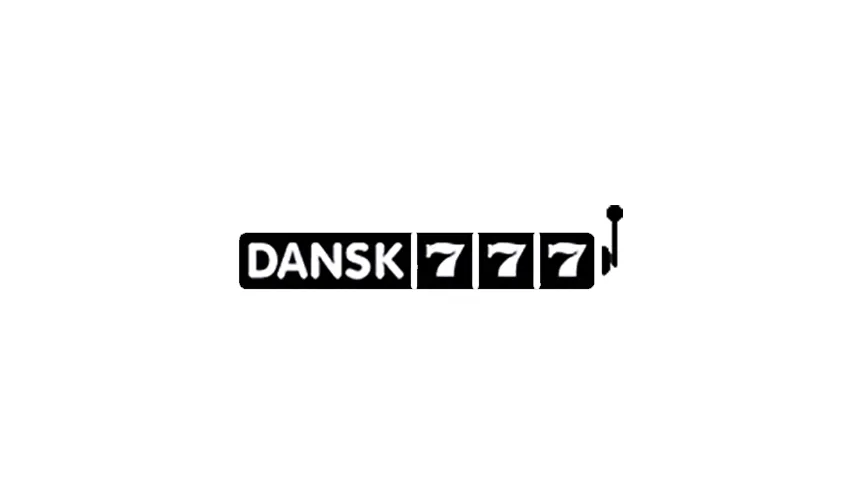
- Prisbelønnet app
- Unikke kampagner
- God velkomstbonus
- Unikt og sjovt tema
- Dansk777 Anmeldelse
18+

- Prisbelønnet app
- Unikke kampagner
- God velkomstbonus
- Unikt og sjovt tema
- Epik Anmeldelse
18+

- Prisbelønnet app
- Unikke kampagner
- God velkomstbonus
- Unikt og sjovt tema
- Eucasino Anmeldelse
18+

- Prisbelønnet app
- Unikke kampagner
- God velkomstbonus
- Unikt og sjovt tema
- GGbet Anmeldelse
18+
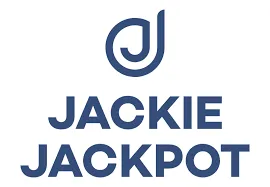
- Prisbelønnet app
- Unikke kampagner
- God velkomstbonus
- Unikt og sjovt tema
- Jackie Jackpot Anmeldelse
18+

- Prisbelønnet app
- Unikke kampagner
- God velkomstbonus
- Unikt og sjovt tema
- Kaiserslots Anmeldelse
18+
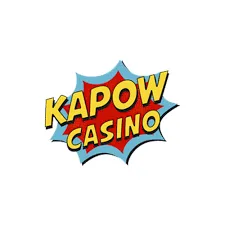
- Prisbelønnet app
- Unikke kampagner
- God velkomstbonus
- Unikt og sjovt tema
- Kapow Anmeldelse
18+

- Prisbelønnet app
- Unikke kampagner
- God velkomstbonus
- Unikt og sjovt tema
- Lanadas Anmeldelse
18+
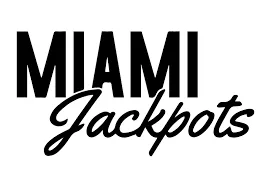
- Prisbelønnet app
- Unikke kampagner
- God velkomstbonus
- Unikt og sjovt tema
- Miami Jackpots Anmeldelse
18+
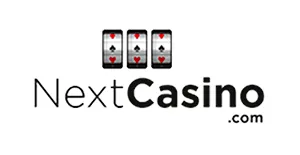
- Prisbelønnet app
- Unikke kampagner
- God velkomstbonus
- Unikt og sjovt tema
- Next Casino Anmeldelse
18+

- Prisbelønnet app
- Unikke kampagner
- God velkomstbonus
- Unikt og sjovt tema
- Playtoro Anmeldelse
18+

- Prisbelønnet app
- Unikke kampagner
- God velkomstbonus
- Unikt og sjovt tema
- 999 Casino Anmeldelse

- Support: available
- Game Count: 0
- RTP: 98 %
- Mega Casino Anmeldelse
18+ | Kun for nye spillere | Regler og vilkår gælder | Spil ansvarligt | Spillemyndighedens hjælpelinje StopSpillet.dk: 70 22 28 25 | Udeluk dig via ROFUS

- Brugervenlig Mobil-App
- God Tilbud Og Bonusser
- Stort Spiludvalg
- Mr Green Anmeldelse
18+ | Kun for nye spillere | Regler og vilkår gælder | Spil ansvarligt | Spillemyndighedens hjælpelinje StopSpillet.dk: 70 22 28 25 | Udeluk dig via ROFUS
Bedste online casinoer i Danmark
LeoVegas Casino

LeoVegas er et af de mest populære og pålidelige online casinoer i Danmark. De tilbyder et stort udvalg af spil, en generøs velkomstbonus, en brugervenlig mobil-app og et live casino af høj kvalitet. LeoVegas har licens fra Spillemyndigheden og har vundet flere priser for sin kvalitet og innovation. LeoVegas Casino byder nye spillere velkommen med en generøs bonus, der består af en 100% match bonus op til 1.000 kr. Vores bookmaker score: 5.0/5.0.
Mr Vegas Casino

Dette er et nyt og spændende online casino, der blev lanceret i 2024. Mr Vegas har over 30 slotspil, 5 roulettespil, og 5 blackjackspil samt live casino og en række eksklusive spil. Casinoet er licenseret af Spillemyndigheden og Curacao eGaming, og det har en udbetalingsats på 89.1%. Nye spillere kan få en 100% match bonus op til 1.000 kr. på deres første indskud. Vores bookmaker score: 4.9/5.0.
Mr Green Casino

Mr Green er et andet top-rated online casino i Danmark, med et slankt og stilfuldt design, en bred portefølje af spil, et lukrativt loyalitetsprogram, og en dedikeret sportsbook. Mr Green har over 800 slotspil, 10+ roulettespil, 10+ blackjackspil samt live casino, sportsvæddemål, bingo og backgammon. Nye spillere kan få 50 free spins, og en 100% match bonus op til 1.000 kr. på deres første indskud. Vores bookmaker score: 4.8/5.0.
PlayOJO Casino

PlayOJO er et friskt og sjovt online casino i Danmark, som tilbyder en stor samling af spil, en velkomst-bonus med gratis spin, en cashback-ordning, og et live casino. Dette er et fair og gennemskueligt online casino, der tilbyder en no-nonsense spiloplevelse. Casinoet har licens fra Spillemyndigheden i Danmark og den maltesiske spillemyndighed, og det har en udbetalingsats på 92.7%. Nye spillere kan få 50 free spins uden omsætningskrav på deres første indbetaling. Vores bookmaker score: 4.8/5.0.
Betinia Casino

Betinia er et nyt og moderne online casino i Danmark, med et tema i form af en futuristisk by. Betinia tilbyder en bred vifte af spil, en velkomstbonus, en ugentlig cashback og et live casino. Nye spillere kan få en 100% bonus op til 1.000 kr. og 200 gratis spins på deres første indbetaling. Casinoet har licens fra Spillemyndigheden i Danmark, og den maltesiske spillemyndighed, og det har en udbetalingsats på 93,6%. Vores bookmaker score: 4.7/5.0.
Chanz Casino

Dette er et socialt og innovativt online casino, der tilbyder en snakkesalig spiloplevelse. Chanz har over 300 slotspil, 5 roulettespil, og 5 blackjackspil samt live casino og sociale spil. Casinoet har licens fra den estiske Told- og Skattestyrelse, og det har en udbetalingsats på 90.6%. Nye spillere kan få en 100% match bonus op til 745 kr. og 300 gratis spins på deres første indbetaling. Vores bookmaker score: 4.7/5.0.
Casino999

Dette er et nyt og spændende online casino, der blev lanceret i 2024. Casino999 har over 200 spillemaskiner, 5 roulettespil, og 5 blackjackspil, samt live casino og nogle eksklusive spil. Casinoet er licenseret af Spillemyndigheden i Danmark og Curacao eGaming, og det har en udbetalingsats på 90.3%. Nye spillere kan få en 100% match bonus op til 1.000 kr. og 99 gratis spins på deres første indbetaling. Vores bookmaker score: 4.6/5.0.
888 Casino

888 Casino er et af de ældste og mest respekterede online casinoer i verden, med en loyal fanskare i Danmark. 888 Casino tilbyder en bred vifte af spil, herunder eksklusive titler, en generøs velkomstbonus, en VIP-klub og et live casino. 888 har 300+ slotspil, 10+ roulettespil, og 10+ blackjackspil samt live casino, poker, sports betting, bingo og backgammon. Casinoet har licens fra Spillemyndigheden i Danmark og fra Gibraltar Gambling Commissioner, og det har en udbetalingsats på 93.3%. Nye spillere kan få en 100% match bonus op til 1.000 kr. på deres første indskud. Vores bookmaker score: 4.5/5.0.
Next Casino

Dette er et veletableret online casino, der har været i drift siden 2013. Next Casino har over 100 spillemaskiner, 5 roulettespil og 5 blackjackspil samt live casino og skrabelodder. Casinoet har licens fra Spillemyndigheden og den britiske Gambling Commission, og det har en udbetalingsats på 90%. Nye spillere kan få en 100% match bonus op til 1.000 kr. og 100 gratis spins på deres første indbetaling. Vores bookmaker score: 4.5/5.0.
Bet365 Casino

Dette er et af de mest velrenommerede og erfarne online casinoer i Danmark, såvel som en førende operatør for sportsvæddemål. Bet365 har over 50 spillemaskiner, 5 roulettespil og 5 blackjackspil samt live casino, poker, bingo og lotteri. Casinoet har licens fra Spillemyndigheden i Danmark, og Gibraltar Gambling Commissioner, og det har en udbetalingsats på 89.7%. Nye spillere kan få en 100% match bonus op til 1.000 kr. på deres første indskud. Vores bookmaker score: 4.4/5.0.
CasinoLuck

Dette er et veletableret online casino, som har været i drift siden 1999. CasinoLuck har en slank og brugervenlig hjemmeside, der tilbyder 400 slotspil, 3 roulettespil og 2 blackjackspil samt live casino og skrabelodder. Casinoet har licens fra Spillemyndigheden i Danmark og den britiske Gambling Commission, og det har en udbetalingsats på 94.8%. Nye spillere kan få en 100% match bonus op til 750 kr. på deres første indskud. Vores bookmaker score: 4.4/5.0.
Slotsmagic Casino

Slotsmagic er et online casino i Danmark, som fokuserer på slotspil, som navnet også antyder. Slotsmagic tilbyder et stort udvalg af slots, en velkomstbonus med gratis spin, en VIP-lounge, og et live casino. Slotsmagic har licens fra Spillemyndigheden og den britiske Gambling Commission, og det har en udbetalingsats på 92.4% i et sikkert og fair gamingmiljø. Vores bookmaker score: 4.3/5.0.
Royal Casino

Royal Casino er et unikt online casino i Danmark, da det er den eneste, der er knyttet til et landbaseret casino – beliggende i Århus. Royal Casino tilbyder et udvalg af spil fra de bedste udbydere, og desuden en velkomstbonus med gratis spin, live casino og en chance for at vinde billetter til det landbaserede casino. Casinoet har licens fra Spillemyndigheden, og det har en udbetalingsats på 93%. Nye spillere kan få 100 gratis spins og en 100% match bonus op til 750 kr. på deres første indskud. Vores bookmaker score: 4.2/5.0.
Karamba Casino

Karamba er et farverigt og muntert online casino i Danmark, med en blå papegøje som maskot. Karamba tilbyder en bred vifte af spil, en velkomstbonus med gratis spin, et VIP-program og et live casino. Karamba har licens fra Spillemyndigheden i Danmark, og den britiske Gambling Commission. De har en venlig og hjælpsom kundeservice. Nye spillere kan få en 100% match bonus op til 1.000 kr. og 100 gratis spins på deres første indbetaling. Vores bookmaker score: 4.1/5.0.
HeySpin Casino

Dette er et friskt og sjovt online casino, der blev lanceret i 2024. HeySpin har over 700 slotspil, 10+ roulettespil og 10+ blackjackspil samt live casino og skrabelodder. Casinoet har licens fra Spillemyndigheden i Danmark og den maltesiske spillemyndighed, og det har en udbetalingsats på 91.8%. Nye spillere kan få en 100% match bonus op til 2.000 kr. og 100 gratis spins på deres første indbetaling. Vores bookmaker score: 4.1/5.0.
ComeOn Casino

ComeOn er et enkelt og ligetil online casino i Danmark, med mottoet “ingen dikkedarer, bare for sjov”. ComeOn tilbyder et udvalg af spil, en velkomstbonus, loyalitetsprogrammer og et live casino. ComeOn har licens fra Spillemyndigheden i Danmark, og det har en hurtig og nem registreringsproces. Nye spillere kan få en 100% match bonus op til 500 kr. på deres første indskud. Vores bookmaker score: 4.0/5.0.
Video Slots Casino

Video Slots er endnu et online casino i Danmark, som har specialiseret sig i slotspil, med over 4.000 titler at vælge mellem. Video Slots tilbyder en velkomst bonus, en weekend booster, et overvæld af spins og et live casino. Video Slots har licens fra Spillemyndigheden i Danmark og den britiske Gambling Commission, og det har en høj udbetalingsats på 95.1% og en hurtig udbetalingsproces. Nye spillere kan få en 100% match bonus op til 745 kr. på deres første indskud. Vores bookmaker score: 4.0/5.0.
Mega Casino

Dette er et slankt og sofistikeret online casino, der tilbyder en vild spiloplevelse. Mega Casino har over 400 slotspil, 10+ roulettespil, og 10+ blackjackspil samt live casino og jackpot-spil. Casinoet har licens fra Spillemyndigheden i Danmark og den maltesiske spillemyndighed, og det har en udbetalingsats på 90.9%. Nye spillere kan få en 100% match bonus op til 150 kr. og 25 gratis spins på deres første indbetaling. Vores bookmaker score: 4.0/5.0.
PlayJango Casino

Dette er et friskt og sjovt online casino, der blev lanceret i 2024. PlayJango har over 40 slotspil, 5 roulettespil og 5 blackjackspil samt live casino og jackpot-spil. Casinoet har licens fra Spillemyndigheden i Danmark, og den maltesiske spillemyndighed, og det har en udbetalingsats på 89.4%. Nye spillere kan få en 100% match bonus op til 745 kr. og 25 gratis spins på deres første indbetaling. Vores bookmaker score: 4.0/5.0.
Bedste danske online casino

Det bedste danske online casino er dét, der tilbyder den bedste spiloplevelse til danske spillere. Det betyder, at casinoet har et stort udvalg af spil, en generøs og loyal bonus, et pålideligt og hurtigt betalingssystem, en venlig og professionel kundeservice, og et højt niveau af sikkerhed og pålidelighed. Det bedste danske online casino har desuden en gyldig licens fra Spillemyndigheden, som sikrer at casinoet følger regler og krav om sikkerhed og fair spil. Baseret på vores bookmaker score og vores ekspertanmeldelser, har vi valgt LeoVegas Casino som det bedste danske online casino i 2024. LeoVegas Casino byder nye spillere velkommen med en generøs velkomstbonus, der består af en 100% match bonus op til 1.000 kr.
Bedste nye danske online casino

Det bedste nye danske online casino er dét, der tilbyder de mest innovative og spændende funktioner, spil og bonusser til danske spillere. Det betyder, at casinoet har et frisk og moderne design, en cutting-edge softwareplatform, en bred og opdateret spilportefølje, attraktive bonustilbud og en lydhør og hjælpsom kundeservice. Det bedste nye danske online casino har desuden en gyldig licens fra Spillemyndigheden, som sikrer, at casinoet er lovligt og sikkert at spille på. Baseret på vores bookmaker score og vores ekspertanmeldelser, har vi valgt Betinia Casino som det bedste nye danske online casino i 2024. Nye spillere kan få en 100% match bonus op til 1.000 kr. og 200 gratis spins på deres første indbetaling.
Casinoet med den bedste bonus

Casinoet med den bedste bonus er det, som tilbyder de mest generøse og attraktive bonustilbud til danske spillere. Det betyder, at casinoet har en høj procentdel af bonusspil, en stor mængde af bonuspenge, et lav omsætningskrav, og en lang gyldighedsperiode for tilbudene. Casinoet med den bedste bonus har desuden en gyldig licens fra Spillemyndigheden, som sikrer, at regler og vilkår er fair og gennemsigtige. Baseret på vores bookmaker score og vores ekspertanmeldelser, har vi valgt LeoVegas Casino. Dette casino tilbyder 100 gratis spins som en velkomstbonus, hvilket er et af de højeste antal blandt alle casinoer. De gratis spins kan bruges på en række forskellige slotspil, herunder nogle af de mest populære titler. De gratis spins har et lavt omsætningskrav på 10x, hvilket betyder at du nemt kan få udbetalt dine gevinster.
Bedste bonus uden indbetaling

Den bedste bonus uden indbetaling, er en der tilbyder gratis penge eller gratis spins til danske spillere, uden at forpligte dem til at foretage en indbetaling. Det betyder, at bonussen har en høj værdi, et lavt eller intet omsætningskrav, og en lang gyldighedsperiode. Baseret på vores bookmaker score og vores ekspertanmeldelser, har vi valgt 888 Casino som casinoet med de bedste bonusser uden indbetaling i 2024. 888 Casino er et af de mest velrenommerede og pålidelige online casinoer i verden, og det tilbyder en generøs bonus uden indbetaling på 170 kr. til danske spillere.
Casinoer med de bedste gratis spins

Casinoer med de bedste gratis spins er dem, der tilbyder gratis spins til danske spillere, enten som en del af deres velkomstbonus, deres regelmæssige kampagner, eller deres loyalitetsprogram. Det betyder, at disse casinoer har et stort antal af gratis spins, et lavt eller intet omsætningskrav og tilbud med en lang gyldighedsperiode. Casinoer med de bedste gratis spins har desuden gyldig licens fra Spillemyndigheden, som sikrer, at reglerne for de gratis spins er fair og gennemsigtige. Baseret på vores bookmaker score og vores ekspertanmeldelser, har vi valgt PlayOJO Casino som casinoet med de bedste gratis spins i 2024. PlayOJO Casino er et friskt og sjovt online casino. PlayOJO Casino tilbyder en stor samling af spil, en velkomstbonus med gratis spin, en cashback-ordning og et live casino.
Bedste casinoudbetaling

En af de vigtigste faktorer, som du må overveje, når du vælger et online casino, er udbetalingssatsen. Udbetalingsraten er den procentdel af penge, som casinoet sender tilbage til spillerne som gevinster over en periode. Jo højere udbetaling, jo bedre chancer for at vinde, og jo mere værdi får du for dine penge. Baseret på vores bookmaker score og vores ekspertanmeldelser, vi har valgt LeoVegas Casino. Dette casino har den højeste udbetalingsats på 96,5%, hvilket betyder, at det betaler 96,5% af de penge, det modtager fra spillerne tilbage som gevinster. Det er et imponerende tal, især i betragtning af det enorme udvalg af spil og generøse bonusser, LeoVegas tilbyder. LeoVegas er også et af de mest troværdige og populære online casinoer i Danmark – af en god grund.
Casinoet med den hurtigste udbetaling

En anden vigtige faktor, som du bør overveje, når du vælger et online casino er hastigheden af udbetalinger. Du ønsker ikke at vente i dage eller uger med at modtage din gevinst, især, hvis du rammer en stor jackpot. Det er derfor, du bør kigge efter online casinoer, der tilbyder hurtige og pålidelige udbetalingsmetoder, såsom e-wallets, forudbetalte kort, eller netbank. Baseret på vores bookmaker score og vores ekspertanmeldelser, har vi valgt Videoslots. Dette casino understøtter flere forskellige e-wallets såsom PayPal, Skrill, Neteller og Mifinity. Tilbageholdelsestiden for e-wallets ligger normalt inden for 24 timer, men nogle gange kan det være så hurtigt som 15 minutter.
Casinoet med laveste udbetaling

Endnu en vigtig faktor, du bør tænke på, når du vælger et online casino er det mindste beløb du må indbetale. Måske du ikke ønsker at risikere alt for mange penge på din første indbetaling, eller måske du ønsker at afprøve forskellige spil og bonusser med et lille budget. Det er derfor, du bør se efter online casinoer, der tilbyder lave minimumsindskud på beløb som 50, 75, eller 100 kr. Baseret på vores bookmaker score og vores ekspertanmeldelser, har vi valgt: MrPlay. Dette casino understøtter flere forskellige e-wallets såsom PayPal, Skrill, Neteller og Mifinity. Du kan indbetale så lidt som 67 kr. med e-wallets hos Mr Play, og derefter nyde deres spil og kampagner.
Bedste live casino

En af de mest spændende og medrivende måder at nyde onlinespil på, er at spille live casinospil. Live casinospil er streamet i real-tid fra professionelle studier eller land-baserede casinoer, og har rigtige dealere og croupiers, der interagerer med spillerne. Du kan spille klassiske bordspil som roulette, blackjack, baccarat og poker, samt innovative spil-shows som Monopol Live, Dream Catcher og Crazy Time. Baseret på vores bookmaker score og vores ekspertanmeldelser, har vi valgt: LeoVegas Casino. Dette casino har det største og mest forskelligartede live casino-udvalg, med over 100 live-spil fra de bedste udbydere i branchen såsom Evolution, NetEnt, Playtech, og Pragmatic Play. Du kan finde eksklusive LeoVegas-borde, VIP-borde, borde med dansktalende dealere og innovative spil som Mega Ball, Lightening Roulette og Deal or No Deal. LeoVegas har også en dedikeret live casino-app til mobile enheder og en generøs live casino velkomstbonus på 100% op til 1.000 kr. i kontanter.
Bedste udenlandske casino
Hvis du er på udkig efter en anderledes og spændende online gamblingoplevelse, skal du måske prøve at spille på et udenlandsk casino. Udenlandske casinoer er online casinoer, der opererer uden for Danmark og ikke har en dansk licens. Dette betyder, at de ikke er reguleret af den Spillemyndigheden, og de behøver ikke at overholde de danske gamblinglove og -skatter. Dette betyder derfor også, at de kan tilbyde flere spil, bonusser, og funktioner, der ikke er tilgængelige på danske kasinoer.

Bedste udenlandske casino overordnet: Tsars Casino. Dette casino er et nyt og innovativt online casino, der tilbyder en enestående og eventyrlig spiloplevelse. Du kan udforske forskellige verdener og indsamle belønninger, mens du spiller med et udvalg på over 3.000 spil fra de bedste udbydere i branchen såsom NetEnt, Microgaming, Play ’ n GO og Yggdrasil. Du kan også få glæde af en generøs velkomstbonus på op til 15.000 KR. og 200 gratis spins, samt daglige cashbacks, reload bonusser og turneringer.
Bedste casino uden MitID
MitID er en digital signatur, der anvendes til at få adgang til online-tjenester i Danmark såsom banker, offentlige hjemmesider og online casinoer. Hvis du har et MitID, kan du nemt registrere dig og spille på et online casino, der har dansk licens, hvor de er forpligtet til at bruge MitID til verificering og sikkerhedsmæssige formål. Men hvis du ikke har et MitID, eller du ønsker at spille på en casino, der ikke har en dansk licens, vil du nødt til at finde et casino uden MitID-registrering. Disse er de online casinoer, der ikke kræver MitID for at du kan tilmelde dig eller spille, og de har som regel en udenlandsk licens og opererer uden for Danmark.

Bedste casino uden MitID overordnet: Casumo Casino. Dette casino er Danmarks top online casino i 2024 med masser af bonusser og kampagner, samt et fremragende rewards-program. Med over 2.000 spil, er der noget, der passer til hver spiller, og du får op til 1.000 kr. i bonus på din første indbetaling. Casumo kræver ikke MitID for at du kan tilmelde dig eller spille, og det har licens fra Malta Gaming Authority.
Bedste casino med PayPal
PayPal er en af de mest populære og praktiske betalingsmetoder for online-transaktioner, herunder online gambling. PayPal giver dig mulighed for at foretage indbetalinger og udbetalinger hurtigt, sikkert og anonymt, uden at dele dine bank- eller kortoplysninger med casinoet. PayPal tilbyder også køberbeskyttelse og konfliktløsningservice, i tilfælde af at du støder på problemer med casinoet.

Bedste casino med PayPal overordnet: Mr Green Casino. Dette casino er et elegant og prisvindende online casino, der tilbyder et grønt gaming-miljø. Mr Green har over 800 slotspil, 10+ roulettespil, og 10+ blackjackspil samt live casino, sportsvæddemål, bingo og backgammon.
Hvordan vi vurderer et online casino
Når vi gennemgå og sammenligne online casinoer, benytter vi et sæt kriterier, der afspejler de vigtigste aspekter af online gambling. Disse kriterier omfatter:
- Udvalg af spil: Vi ser på de mange forskellige spil og kvaliteten af de spil, der tilbydes hos et online casino. Vi har kontrollerer også om spillene er kompatible med forskellige enheder og platforme, og om de har rimelige og tilfældige udfald.
- Bonustilbud: Vi vurderer generøsitet, frekvens samt og vilkår og betingelser for de bonus tilbud, som er til rådighed på et online casino. Vi overvejer også indsatskrav, udløbsdatoer og spilbegrænsninger for bonusser.
- Betalingsmetoder: Vi vurderer sikkerhed, hastighed og bekvemmelighed for de betalingsmetoder, som understøttes af det pågældende online casino. Vi kontrollere også, om det pågældende online casino accepterer danske kroner og andre valutaer, og om det opkræver gebyrer for ind-og udbetalinger.
- Kundeservice: Vi kontrollerer, om det pågældende online casino tilbyder flere kommunikationskanaler, såsom live chat, telefon, e-mail og sociale medier.
- Licens og regulering: Vi kontrollerer, om det pågældende online casino har en gyldig licens fra den danske Spillemyndighed eller en anden anerkendt kompetence.
Hvordan begynder du at spille online casino
Hvis du er ny indenfor online gambling, undrer du dig måske over, hvordan du kan starte med at spille på online kasinoer. Processen er enkel og ligetil, og det tager kun et par minutter at fuldføre registreringer. Her er de trin, du skal følge:
- Vælge et online casino: Det første skridt er at vælge et online casino, der passer til dine præferencer og behov. Du kan bruge vores guides og anmeldelser for at finde den bedste online casino for dig, eller du kan surfe på internettet og sammenligne de forskellige muligheder. Sørg for, at det online casino, du vælger, har en dansk licens, et godt ry, og et generøst velkomstbonustilbud.
- Registrer din konto: Det næste skridt er at registrere en konto hos det valgte online casino. Du bliver nødt til at give nogle grundlæggende oplysninger, såsom dit navn, e-mail, telefonnummer, og adresse. Du skal også vælge et brugernavn og en adgangskode, og samtidig vælge en valuta. Nogle online casinoer kan kræve, at du verificerer din identitet og din alder ved at uploade en kopi af dit ID, pas eller kørekort.
- Gør krav på din bonus: Det tredje skridt er at gøre krav på din bonus, hvis online casinoet tilbyder en sådan. Du skal muligvis indtaste en bonuskode, foretage en minimum indbetaling, eller vælge en bonus. Denne bonus vil blive krediteret til din konto, og du kan bruge den til at spille spil på casinoet. Sørg for at læse vilkår og betingelser for den bonus du har valgt, så du forstår dens indsatskrav, udløbsdato og eventuelle spilbegrænsninger.
- Foretag en indbetaling: Det fjerde trin er at foretage en indbetaling, hvis du ønsker at spille med rigtige penge. Du kan vælge fra en bred vifte af betalingsmetoder, såsom kreditkort, betalingskort, e-wallets, bankoverførsler eller forudbetalte kort. Du vil din indbetaling straks blive behandlet, og du kan begynde at spille spil i dit online casino.
- Start spillet: Det sidste trin er selvfølgelig at starte et spil i casinoet. Du kan vælge fra en bred vifte af spil såsom spilleautomater, bordspil, live casino, video poker, bingo, skrabelodder og meget mere.
Bonusser ved casinoer i Danmark
Online casinoer i Danmark tilbyder forskellige typer af bonusser for at tiltrække og belønne spillere. Bonusser er salgsfremmende tilbud, der giver dig ekstra penge, gratis spins, eller til andre fordele, når du tilmelder dig, indbetaler til eller spiller på et online casino. Men bonusser har vilkår og betingelser såsom omsætningskrav, maksimale udbetalingsgrænser og spilbegrænsninger. I denne guide vil vi forklare de mest almindelige typer af bonusser ved casinoer i Danmark.
Velkomstbonusser
En velkomstbonus er en bonus, som online casinoet tilbyder nye spillere, der registrerer sig og laver deres første indbetaling. En velkomstbonus matcher som regel din indbetaling med en vis procentdel, op til et maksimalt beløb. For eksempel betyder 100% op til 1.000 kr. i velkomstbonus, at casinoet vil fordoble dit indskud op til 1.000 kr., hvilket giver dig 2.000 kr. at spille med. Nogle velkomstbonusser kan også inkludere gratis spins på udvalgte slotspil, eller andre fordele, såsom cashback eller loyalitetspoint.
| Casinoer | Tilføjet | Bonus |
|---|---|---|
| Winlandia | 2024 | Up to 800 |
| Vindstort Casino | 2004 | GOLDSPIN (50 øre) |
| Videoslots | 2011 | Up to 1000 |
| VegasWinner | 2009 | Up to 500 |
| Vbet | 2023 | Up to 25 |
Gratis spins på online casino
Gratis spins er en type bonus, som online casinoer tilbyder spillere der ønsker at spille slotspil. Gratis spins giver dig mulighed for at dreje hjulene på en spillemaskine gratis, uden at risikere dine egne penge. Du kan vinde rigtige penge fra gratis spins, men du kan være nødt til at opfylde nogle betingelser, før du kan hæve dine gevinster. Gratis spins kan blive tilbudt som en del af en velkomstbonus, en bonus uden indbetaling, en reload-bonus, eller en særlig kampagne. Som eksempel kan du måske få 50 free spins på Starburst, når du tilmelder dig på et online casino, eller 20 gratis spins på Book of Dead, når du indbetaler 100 kr. eller mere. Nogle online casinoer kan også give dig gratis spins på en regelmæssig basis, såsom en daglig, ugentlig eller månedlig.
| Casinoer | Tilføjet | Bonus |
|---|---|---|
| Winlandia | 2024 | Up to 800 |
| Vindstort Casino | 2004 | GOLDSPIN (50 øre) |
| Videoslots | 2011 | Up to 1000 |
| VegasWinner | 2009 | Up to 500 |
| Vbet | 2023 | Up to 25 |
Bonus uden indbetaling
En såkaldt “no deposit bonus” er en bonus, som online casinoer tilbyder spillere, der ønsker at spille uden at foretage en indbetaling. En bonus uden indbetaling giver dig gratis penge, gratis spins eller andre fordele, blot for at tilmelde dig et online casino. En bonus uden indbetaling er en sjælden og attraktiv form for bonus, da den giver dig mulighed for at prøve et online casino og spille gratis, uden at risikere dine egne penge. Du bør dog være opmærksom på de begrænsninger og restriktioner, som gælder for den pågældende bonus uden indbetaling såsom omsætningskrav, den maksimale udbetalingsgrænse, udløbsdato og hvilke spil der kvalificerer til bonussen.
| Casinoer | Tilføjet | Bonus |
|---|---|---|
| Winlandia | 2024 | Up to 800 |
| Vindstort Casino | 2004 | GOLDSPIN (50 øre) |
| Videoslots | 2011 | Up to 1000 |
| VegasWinner | 2009 | Up to 500 |
| Vbet | 2023 | Up to 25 |
Casino-VIP, kampagner og loyalitetsprogrammer
Casino-VIP, kampagner og loyalitetsprogrammer er bonusser og fordele, som online casinoer tilbyder deres loyale og dedikerede spillere. Casino-VIP, kampagner og loyalitetsprogrammer er en måde, hvormed online casinoer kan belønne og fastholde deres mest værdifulde kunder. Disse bonusser og fordele kan øge din spiloplevelse og dine chancer for at vinde, og måske give dig en følelse af at modtage en anerkendelse. For at blive en del af et Casino-VIP, en kampagne eller et loyalitetsprogram, er du normalt nødt til at spille regelmæssigt og for et vist beløb på casinoet. Nogle online casinoer har et pointsystem, hvor du optjener point for hver krone du spiller for, som du siden kan bruge til bonusser og andre fordele.

Populære online casinospil i Danmark
Online casinospil er populære i Danmark, fordi de tilbyder bekvemmelighed, forskellige udvalg, underholdning og naturligvis potentielle gevinster til spillerne. Nogle af de mest populære online casino spil i Danmark er:
Casino Blackjack
Blackjack er et kortspil, der spilles mellem spilleren og dealeren. Formålet med spillet er at få en hånd med en værdi så tæt på 21 som muligt – uden at få mere end 21 (burst). Blackjack er et af de mest populære online casinospil i Danmark, fordi det har en lav ’edge’ til huset, hvilket betyder at casinoet kun har en lille fordel over spilleren, og spillet kræver dygtighed og strategi, hvilket betyder, at spilleren kan påvirke udfaldet af spillet ved at tage kloge beslutninger. Blackjack har også mange variationer, som Europæisk Blackjack, Amerikansk Blackjack, Single Deck Blackjack, Multi-hånd Blackjack, der hver især tilbyder forskellige regler og funktioner, som passer til forskellige præferencer og smag.
Casino med Roulette
Roulette er en bordspil, der spilles med et hjul, en kugle og et spillebord. Hjulet har 37 eller 38 nummererede lommer, afhængigt af hvilken version der spilles. Lommerne har farven rød, sort eller grøn. Roulette er et af de mest populære online casinospil i Danmark, fordi det er let at lære at spille, men også fordi det byder på masser af spænding. Roulette har også en bred vifte af væddemålsindstillinger og udbetalinger, hvilket betyder, at spillere kan vælge deres eget niveau for risiko og belønning. Roulette har forskellige varianter såsom Europæisk Roulette, Amerikansk Roulette, fransk Roulette og Mini Roulette, der alle tilbyder forskellige regler og funktioner, som kan passe til forskellige præferencer og smag.
Casino Baccarat
Baccarat er et kortspil, der spilles mellem spilleren og en ‘bankmand’. Baccarat er et af de mest populære online casinospil i Danmark, fordi det er let at spille og har en lav ’edge’ til huset, hvilket betyder at casinoet kun har en lille fordel over spilleren. Baccarat har også en aura af glamour og mystik, da det ofte er forbundet med ‘high rollers’ (spillere med store indsatser) og avancerede spillere. Baccarat findes også i forskellige varianter, såsom Punto Banco, Chemin de Fer, Baccarat Banque, og Mini-Baccarat, der hver især har forskellige regler og funktioner, der passer til forskellige spilleres præferencer og smag.
Live Casino
Live casino er en type af online casino, hvor en ægte live dealer er vært for spillet. Live casino spil streames i høj kvalitet fra et studie eller et land-baseret casino, og spilleren kan interagere med dealeren og andre spillere via chat eller lyd. Live casino er en af de mest populære online casino spil i Danmark, fordi det kombinerer det bedste af begge verdener: bekvemmeligheden og komforten ved at spille online, og det sociale-og autentiske aspekt ved at spille i et rigtigt casino. Live casino tilbyder en bred vifte af spil, såsom live blackjack, live roulette, live baccarat, live-poker og live game show, der alle kan appellere til forskellige præferencer og forskellig smag.
Spilleautomater online
Spilleautomater er spil med chance for gevinster, hvor der spilles med hjul, symboler, og gevinstlinjer. Formålet med spillet er at dreje hjulene og matche symboler på betalingslinjerne, som kan være vandrette, lodrette, diagonale eller i zigzag-mønstre. Slot-maskiner, som de også kaldes, er en af de mest populære og varierede typer af online casinospil, da de tilbyder stor variation, underholdning og selvfølgelig potentielle gevinster til spillerne. Online spillemaskiner har forskellige temaer, typografier og formater, og de de forskellige typer kaldes enten klassiske spillemaskiner, video slots, 3D-slots, progressive slots, og megaways-slots. Online spillemaskiner leveres og drives af softwareudbydere, som skaber og udvikler spillene ved hjælp af random number generators (RNGs) eller andre algoritmer, som sikrer retfærdige og tilfældige udfald. Online spilleautomater kan spilles gratis eller for rigtige penge, afhængigt af spillerens præferencer og budget.
Gratis spillemaskiner
Gratis spillemaskiner (slots) er online spilleautomater, der kan spilles gratis, uden at du risikerer nogen penge. Gratis slots giver spillerne mulighed for at nyde sjov og spænding, uden nogen økonomisk forpligtelse eller noget pres. Gratis slots kan også hjælpe spillere til at lære reglerne og funktioner i spil, øve deres færdigheder og strategier, og teste spillene, før der spilles for rigtige penge.
Jackpots
Jackpots er online spilleautomater, som tilbyder en chance for at vinde en stor sum penge, som regel ved at ramme en sjælden eller speciel kombination af symboler. Jackpots kan være faste eller progressive, afhængigt af spiltypen. Faste jackpots har en forudbestemt værdi, der ikke ændrer sig, mens progressive jackpots har en værdi, der stiger med hver indsats, som placeres på spillet, indtil nogen vinder jackpotten.
Spiludbydere i Danmark
Spiludbydere er virksomheder, der skaber og udvikler online casinospil, så som spilleautomater, bordspil, kortspil og live dealer-spil. Spiludbyderne bruger forskellige teknologier, såsom tilfældige tal-generatorer (RNGs) eller live streaming, til at sikre fair og tilfældige resultater i spillene. Spiludbydere tilbyder forskellige funktioner, såsom grafik, lyd, temaer, bonusser og jackpots for at gøre spiloplevelsen så god som muligt.
Mange spiludbydere opererer på det danske online casinomarked, men nogle af de mest populære og velrenommerede dem er:
NetEnt:
NetEnt er en svensk spiludbydervirksomhed, der blev grundlagt i 1996. NetEnt er kendt for sin høje kvalitet og innovative spil, såsom Starburst, Gonzo’s Quest, Mega Fortune og Narcos. NetEnt tilbyder også en live casinoplatform, samt brandede spil baseret på populære film, TV-shows samt musikere og bands. NetEnt fik dansk licens i 2011 og har leveret spil til mange danske online casinoer lige siden.
Microgaming:
Microgaming er en britisk spiludbydervirksomhed, der blev grundlagt i 1994. Microgaming er en af pionererne inden for online casinosoftware, og de har produceret over 800 spil såsom Thunderstruck, Immortal Romance, Mega Moolah og Game of Thrones. Microgaming tilbyder også en live casinoplatform, samt progressive jackpots, der kan nå op på millioner af euro.
Play ’n GO:
Play’n GO er en spiludbydervirksomhed, der blev grundlagt i 1997. Play’n GO er kendt for sine farverige og underholdende spil såsom Book of Dead, Reactoonz, Brand Joker, og Moon Princess. Play’n GO tilbyder også en bred vifte af temaer, genrer og funktioner med både ægyptiske temaer, fantasi-temaer, eventyr og grid-baserede spil.
Betalingsmetoder for Online Casino i Danmark
Betalingsmetoder er de måder, hvorpå spillere kan indbetale og udbetale penge til og fra deres online casinokonti. Betalingsmetoder kan variere, afhængigt af det pågældende online casino, hvor spilleren bor, og hvad spilleren foretrækker. Betalingsmetoder kan omfatte kreditkort, betalingskort, e-wallets, forudbetalte kort, kryptovalutaer og bankoverførsler. Nogle af de mest almindelige og populære betalingsmetoder for online casino i Danmark er:
Dankort:
Dankortet er jo det nationale debetkort i Danmark, og det er almindeligt accepteret af de fleste danske online casinoer. Dankort er en sikker og nem betalingsmetode, der gør det muligt for spillere at indbetale og udbetale penge direkte fra deres konti. Dankort transaktioner er normalt øjeblikkelig og gratis.
PayPal:
PayPal er en af de mest populære og betroede e-wallets i verden, og det bruges også af danske online casino-spillere. PayPal er en hurtig, nem og sikker betalingsmetode, der gør det muligt for spillere at indbetale og hæve penge ved hjælp af deres e-mail-adresse og adgangskode. PayPal-transaktioner er normalt øjeblikkelige og gratis, men nogle online casinoer kan opkræve et mindre gebyr.
Skrill:
Skrill er en anden populær og betroede e-wallet, der er til rådighed for danske online casino-spillere. Skrill er en enkel, nem og sikker betalingsmetode, der gør det muligt for spillere at indbetale og hæve penge ved hjælp af deres e-mail-adresse og adgangskode.
Online casinoer med dansk licens
Online casinoer med dansk licens, er online casinoer, der har fået licens fra den danske spillemyndighed. Online casinoer med dansk licens er lovlige, sikre og fair, da de skal overholde strenge regler og bestemmelser, som er fastsat af den danske spillemyndighed.
Hvordan kan du finde ud af, om casinoet har en dansk licens?
Der er flere måder at finde ud af, om et online casino har en dansk licens, såsom:
- Kontrol af online casinoets hjemmeside
- Kontrol af online casinoets anmeldelser
- Kontrol ved online casinoets kundesupport
Hvad er forskellen mellem danske casinoer og udenlandske casinoer med dansk licens?
Danske casinoer, er online casinoer, der er baseret i Danmark og opererer udelukkende til det danske marked. Udenlandske casinoer med dansk licens, er online casinoer, der er baseret i andre lande og arbejder for flere markeder, herunder det danske marked. Begge typer af online casinoer har en dansk licens, hvilket betyder, at de er lovlige, sikre og fair for danske spillere. Der er dog nogle forskelle mellem dem, såsom:
- Spil og spiludbydere. Danske casinoer tilbyder normalt spil og spiludbydere, som er populære og velkendte hos de danske spillere, såsom NetEnt, Microgaming, og Play’n GO. Udenlandske casinoer med dansk licens tilbyder spil og spiludbydere, der er mindre kendte eller tilgængelige for danske spillere, som Betsoft, Pragmatisk Play og Habanero.
- Bonusser og kampagner. Danske casinoer tilbyder normalt bonusser og kampagner, der er skræddersyet til og appellerer til de danske spillere, såsom gratis spins, cashback og loyalitetsprogrammer. Udenlandske casinoer med dansk licens kan tilbyde bonusser og kampagner, der er mere generelle eller mindre attraktive for de danske spillere, som f.eks match bonus, bonusser uden indbetaling og turneringer.
- Betalingsmetoder og valutaer. Danske kasinoer tilbyder normalt betalingsmetoder og valutaer, som er praktiske og foretrukket af de danske spillere, såsom Dankort, PayPal – og den danske krone. Udenlandske casinoer med dansk licens kan tilbyde betalingsmetoder og valutaer, som er mindre praktiske eller ikke foretrækkes af de danske spillere, såsom kreditkort, Skrill – og betaling i Euro.
Udenlandske casinoer uden dansk licens
Udenlandske casinoer uden dansk licens, er online casinoer, der er baseret i andre lande og ikke har en licens fra den danske spillemyndighed. Udenlandske casinoer uden dansk licens er ulovlige, er usikre, og unfair overfor de danske spillere, de de ikke følger de regler og bestemmelser, der er fastsat af den danske spillemyndighed. Nogle af de risici og ulemper ved at spille på udenlandske casinoer uden dansk licens er:
- Manglende beskyttelse og sikkerhed. Udenlandske casinoer uden dansk licens ikke er nødt til at følge de højeste standarder for beskyttelse og sikkerhed, som den danske spillemyndighed kræver, såsom SSL-kryptering, data, privatliv og ansvarligt spil.
- Manglende fairness og tilfældighed. Udenlandske casinoer uden dansk licens behøver ikke bruge certificerede og testede software og spil, der sikrer fairness og tilfældighed, såsom RNGs eller live streaming.
- Manglende kundeservice og konfliktløsning. Udenlandske casinoer uden dansk licens behøver ikke at yde professionel og hjælpsom kundesupport og konfliktløsning til spillere, såsom live chat, telefon, e-mail eller sociale medier.
Licens og regulering
Online gambling i Danmark er lovligt og reguleret af den danske spillemyndighed , som er en uafhængig offentlig enhed, der overvåges af skatteministeriet. Spillemyndigheden er ansvarlig for udstedelse af licenser, overvågning af overholdelse, håndhævelse af regler, og ansvarlig for at forhindre ulovlige gamblingaktiviteter.
Spillemyndigheden
Den danske Spillemyndighed står også for initiativer for ansvarligt spil i Danmark, såsom ROFUS-registret for selv-udelukkelse, hjælpelinjen StopSpillet og certificeringsordningen for gamblingoperatører. Den danske Spillemyndighed samarbejder også med andre nationale og internationale myndigheder og organisationer for at sikre et sikkert og fair gamblingmiljø.
ROFUS
ROFUS er spillemyndighedens register for selv-udelukkede personer. Spillere, der selv ønsker at udelukke sig midlertidigt eller permanent fra online gambling og landbaserede kasinoer i Danmark, kan lade sig registrere frivilligt i ROFUS ved at bruge deres MitID. ROFUS omfatter fra oktober 2024 også væddemål hos fysiske forhandlere i Danmark .
ECOGRA
ECOGRA sikrer, at online gamblingoperatører er i overensstemmelse med de høje standarder for beskyttelse, sikkerhed, retfærdighed, og den tilfældighed, der kræves af den danske Spillemyndighed og andre myndigheder. ECOGRA tilbyder også akkrediterede ISO/IEC-certificeringer til information security management-systemer og alternativ konfliktløsningsservice for online gambling tvister.
Kundeservice og support på online casinoer
Kundeservice og support spiller en væsentlig rolle for online gambling, da de yder spillere bistand, information, vejledning og løsninger på eventuelle problemer eller klager. Online kasinoer i Danmark tilbyder forskellige kanaler og metoder til kundeservice og support, såsom:
- Live chat. Live chat er en hurtig, nem og praktisk måde at kontakte et online casinos kundeserviceteam i real-tid. Live chat er normalt tilgængelig 24/7 og kan tilgås fra online casinoets website eller en app.
- Telefon. Telefonen er en anden måde at kontakte et online casinos kundeserviceteam direkte og mundtligt.
- E-mail. E-mail er en mere formel og detaljeret måde at kontakte online casinos kundeserviceteam på skriftligt. E-mail er normalt tilgængelig 24/7 og kan tilgås fra online casinoets website eller en app.
Oversigt over de danske casinoer
Danmark har et overraskende stort antal af casinoer for et relativt lille land. Der er i øjeblikket seks casinoer i Danmark, der ligger i nogle af landets største byer: Aalborg, Århus, København, Helsingør og Odense. Casinoet i København er det største casino i Danmark, med omkring 140 spillemaskiner og cirka 25 live-spilborde.
Casinoer i Danmark tilbyder en bred vifte af spil, såsom roulette, blackjack, baccarat, poker og spilleautomater. De er også værter for turneringer, events og kampagner for deres gæster. Casinoer er åbne hver dag, som regel fra kl. 14 til 04, entréen er typisk 95 kr. Der en dress code for alle gæster, og en aldersgrænse på 18 år.
Casinoerne i Danmark er reguleret af den danske Spillemyndighed, der sikrer, at de opererer på en lovlig, sikker og fair måde. Casinoerne betale skatter og afgifter til den danske stat, hvilket bidrager til den offentlige velfærd og forebyggelse af ludomani. De samarbejder også med Spillemyndigheden om initiativer til ansvarligt spil, som f.eks ROFUS og StopSpillet.
Ansvarligt spil
Ansvarligt spil er konceptet som skal sikre, at gambling på en sikker, fair og underholdende måde, uden at forårsage skade på spillerne, samfundet, eller omgivelserne. Ansvarligt spil involverer både gamblingoperatører og spilmyndigheder, såvel som spillerne selv, der må være opmærksomme på de risici og konsekvenser det kan have at spille, så de kan træffe velbegrundede og fornuftige beslutninger.
Ansvarligt spil – krav til Casinoer
Casinoer i Danmarkskal overholde en række krav til Ansvarligt spil,fastsat af Danish Spillemyndigheden (DGA) og den danske Lov om Gambling. Nogle af disse krav er:
- Licens og regulering
- Beskyttelse og sikkerhed Casinoer skal anvende certificeret og testet software og spil, der sikrer fairness og tilfældighed, såsom tilfældige tal-generatorer (RNG) eller live streaming.
- Kundeservice
- Initiativer for Ansvarligt spil Casinoer skal agere i henhold til spillemyndighedens initiativer for Ansvarligt spil, som f.eks ROFUS, StopSpillet, og certificeringsordning for gamblingoperatører.
Værktøjer til at forhindre problematisk gambling
Problematisk gambling er alvorligt, og det kan påvirke det fysiske, psykiske, sociale og finansielle liv for spillere og deres familier. Gamblin problemer kan forebygges eller behandles ved hjælp af forskellige værktøjer og ressourcer, f.eks.:
- ROFUS. ROFUS er Spillemyndighedens register for selv-udelukkede personer. Spillere, der selv ønsker at udelukke sig midlertidigt eller permanent fra online gambling og landbaserede casinoer i Danmark, kan frivilligt lade sig registrere i ROFUS ved at bruge deres MitID.
- StopSpillet. StopSpillet er Spillemyndighedens hjælopelinje for spillere med problemer og for deres pårørende. StopSpillet tilbyder professionel, uafhængig og fortrolig rådgivning og vejledning om ansvarligt spil, problematisk spil og ludomani.
- Selv-begrænsning og værktøjer til realitetscheck. Selv-begrænsning og værktøjer til realitetscheck er funktioner, der giver spillere mulighed for at sætte grænser for deres spilletid, indskud, eller hyppighed, eller for at modtage påmindelser om deres spilaktivitet, såsom varighed, beløb, som er satset, eller nettoresultatet.
Hjælpelinjer, hvis du har et spilleproblem
Hvis du har et spilleproblem, eller hvis du kender nogen, der har, kan du kontakte følgende hjælpelinjer for hjælp og støtte:
- StopSpillet. StopSpillet er Spillemyndighedens hjælpelinje for spillere med problemer og for deres pårørende. StopSpillet tilbyder professionel, uafhængig og fortrolig rådgivning og vejledning om ansvarligt spil, problematisk spil og ludomani. StopSpillet kan kontaktes via telefon, chat, e-mail eller online-formularen.
- LudomaniLinjen. LudomaniLinjen er en national hjælpelinje for spillere med problemer og for deres pårørende. Den drives af Center for Ludomani, som er et privat behandlingscenter for ludomani.
Konklusion
Online casinospil er en populær og spændende form for underholdning, som kan nydes af spillere i Danmark. Online casinospil tilbyder bekvemmelighed, variation, underholdning, og de potentielle gevinster til spillere, såvel som et sikkert, retfærdigt og reguleret gamblingmiljø. Online casinospil kan spilles gratis eller for rigtige penge, afhængigt af spillerens præferencer og budget. Dog kan online casinospil også indebære risici og farer, såsom ludomani, hvidvaskning af penge og bedrageri. Derfor bør spillere altid at spille ansvarligt og fornuftigt, og bruge de værktøjer og ressourcer, der er til rådighed for at forebygge og behandle problemer, som f.eks ROFUS, StopSpillet og ECOGRA. Vi håber, at denne guide vil hjælpe dig med at finde de bedste online casinospil for dig, og til at have en sjov og givende online gamblingoplevelse.
FAQ
Hvad er et online casino?
En online casino er et websted eller en app, der giver dig mulighed for at spille casinospil på internettet, ved hjælp af din computer, smartphone eller tablet. Online casinospil er baseret på de samme regler og principper som de traditionelle casinospil, men de har nogle fordele, såsom komfort, udvalg og tilgængelighed.
Hvordan kan jeg begynde at spille på et online casino?
For at begynde at spille på et online casino, må du vælge en online casino, der passer til dine præferencer og behov og registrere en konto. Derefter kan du kræve din bonus, lave en indbetaling og starte med at spille. Du kan bruge vores guide og anmeldelser for at finde den bedste online casino for dig, eller du kan surfe på internettet og sammenligne de forskellige muligheder.
Hvad er vigtigt at sammenligne, når du vælger et online casino?
Når du vælger et online casino, bør du sammenligne forskellige aspekter, såsom valg af spil, bonustilbud, betalingsmetoder, kundesupport, licens og regulering, omdømme og troværdighed, og meget mere. Du kan bruge vores kriterier og vurderinger for at sammenligne online casinoer, og læse vores detaljerede og ærlige anmeldelser af hvert enkelt online casino.
Hvor kan jeg finde de bedste casino bonuskoder?
Du kan finde de bedste casino-bonuskoder her på vores hjemmeside, eller på online casinoets hjemmeside eller på andre hjemmesider, der specialiserer sig i online gambling. Bonuskoder er koder som du skal indtaste, når du gør krav på en bonus, for at aktivere den og modtage den. Bonuskoder kan give dig adgang til eksklusive eller særlige tilbud, såsom gratis spins, bonus uden indbetaling, eller højere match bonus.
Hvilke betalingsmetoder kan bruges på online casinoer?
Online casinoer understøtter en bred vifte af betalingsmetoder, såsom kreditkort, betalingskort, e-wallets, bankoverførsler, eller forudbetalte kort. De betalingsmetoder, som du kan bruge, afhænger af det online casino, du vælger, og det land, som du bor i. Du bør tjekke online casinoets hjemmeside eller vores anmeldelser til at se, hvilke betalingsmetoder der er tilgængelige, og hvad er minimum-og maksimumgrænser samt gebyrer og sagsbehandlingstider.
Er det sikkert at spille på online casinoer i Danmark?
Ja, det er sikkert at spille på online casinoer i Danmark, så længe du vælger et online casino, der har en gyldig licens fra den danske Spillemyndighed eller en anden anerkendt kompetence. Den danske Spillemyndighed er det officielle organ, der regulerer og overvåger online gamblingindustrien i Danmark, og sikrer, at online-casinoer handler i overensstemmelse med de gældende regler og forskrifter for online gambling i Danmark. Den danske Spillemyndighed beskytter også spillernes rettigheder og interesser, og myndigheden fremmer fair og ansvarligt spil.
Hvorfor skal jeg spille på et casino med dansk licens?
Du bør spille på et casino med dansk licens, fordi det betyder, at casinoet er lovligt, sikkert og pålideligt, og at det følger Spillemyndighedens standarder og krav. Et casino med dansk licens giver desuden nogle fordele for spillerne, såsom skattefrie gevinster, adgang til ROFUS (det nationale selv-udelukkelsesregister), beskyttelse mod svindel og hvidvaskning af penge.
Hvilket online casino er det bedste?
Du kan bruge vores guides og anmeldelser for at finde den bedste online casino for dig, baseret på vores kriterier og vurderinger. Baseret på vores bookmaker score og vores ekspertanmeldelser har vi valgt LeoVegas Casino, som det bedste danske online casino i 2024. LeoVegas Casino byder nye spillere velkommen med et generøst bonustilbud, der består af en 100% match bonus op til 1.000 kr. og 300 gratis spins ved første indbetaling.
Hvilket online casino har de bedste danske spil?
Den online casino, der har de bedste danske spil er et, der tilbyder en bred vifte af spil, der er designet, udviklet, eller er inspireret af den danske kultur, historie eller mytologi. De bedste danske spil bør også have en høj kvalitet i grafik, lyde og funktioner samt fair og tilfældige resultater. Baseret på vores bookmaker score og vores ekspertanmeldelser har vi valgt LeoVegas Casino, som det danske online casino med de bedste spil i 2024.
Hvilke casinoer er det bedste for begyndere?
Casinoer, som er bedst egnet for begyndere er dem, der tilbyder en simpel og nem registreringsproces, en klar og informativ hjemmeside, lav og fleksibel indbetalingsgrænse, en generøs velkomstbonus uden for store omsætningskrav, et bredt og varieret udvalg af spil med gratis demo-mode samt en hjælpsom og venlig kundesupport foruden en officiel dansk licens. Baseret på vores bookmaker score og vores ekspertanmeldelser har vi valgt: Mr. Play, som det bedste danske casino for begyndere.
Hvilket online casino har de højeste udbetalinger?
Det online casino, der har de højeste udbetalinger, er et, der tilbyder en høj tilbagebetalingsprocent (RTP), en lav fordel til huset og en høj volatilitet. Baseret på vores bookmaker score og vores ekspertanmeldelser har vi valgt LeoVegas Casino spil, som online casinoet med de højeste udbetalinger. Dette casino har den højeste udbetalingssats på 96,5%, hvilket betyder, at det tilbagebetaler 96,5% af de penge, det modtager fra spillerne som gevinster.
Hvad er vi være opmærksomme på, når vi undersøger online casinoer?
Når vi undersøger online kasinoer, er vi opmærksomme på forskellige aspekter, såsom udvalget af spil, bonustilbud, betalingsmetoder, kundesupport, licens og regulering, omdømme og troværdighed, og meget mere. Vi bruger også et sæt af kriterier, der afspejler de vigtigste aspekter ved online gambling. Vi leverer samtidig en detaljeret og ærlig gennemgang af hvert enkelt online casino, og giver vores anbefalinger og tips.
Kilder
Det siger vores partnere
BruceBet
At samarbejde med copenhagenize.com har været en game-changer; deres dedikation og innovative tilgang gør dem til en uvurderlig del af vores netværk
Evgen Shlauk
Senior Affiliate Manager
Casino bonus







